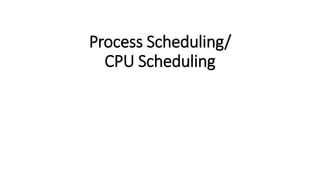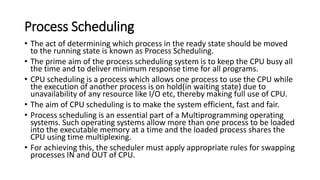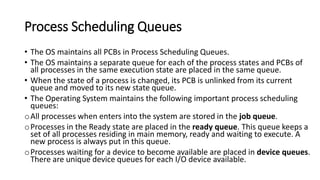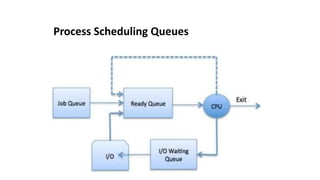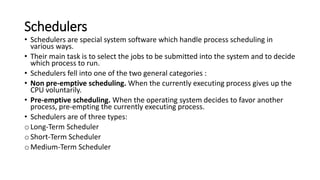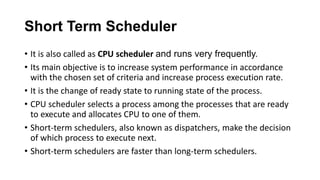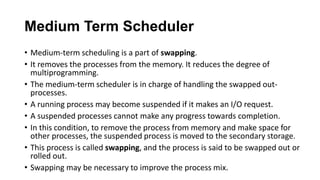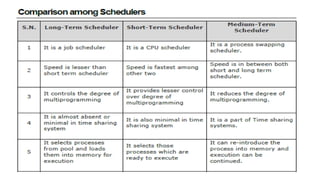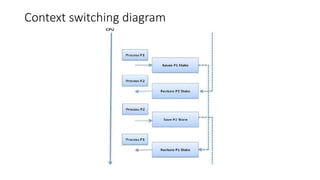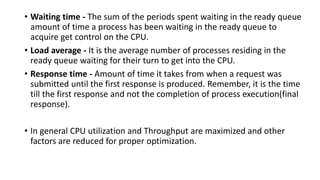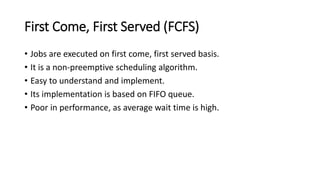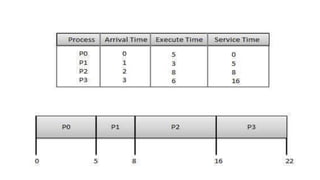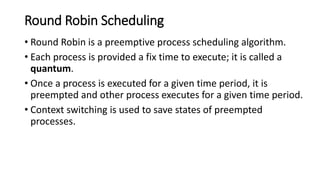The document discusses various aspects of process scheduling and CPU scheduling. It describes the different queues that an operating system maintains for processes in different states. These include ready queues for processes ready to execute, and device queues for processes waiting on I/O. It also covers schedulers for long term, short term, and medium term scheduling and different scheduling algorithms like FCFS, priority scheduling, and round robin scheduling. Context switching is described as the mechanism to store and restore process states to enable time sharing of the CPU between processes.
